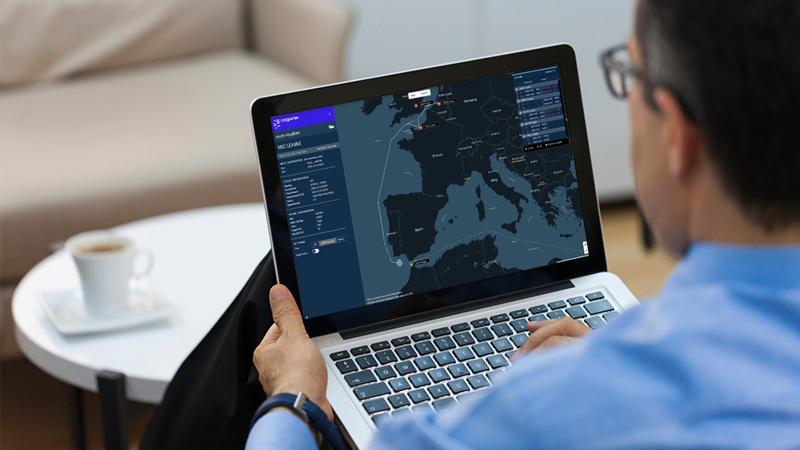Pandemic-era shopping, COVID-related shutdowns, and saturated ports continue to place unprecedented pressure on the ocean carrier industry. We caught up with Angela Gadaev, our Product Portfolio Manager – International Logistics, to get her take on the state of the ocean freight market and why now is the time for carriers and forwarders alike, to embrace digitalization.
“We’re in a demand and supply crisis, unlike anything we’ve seen before.”
If we cast our minds back to the early months of 2020, high demand for containers and space on vessels was quickly compounded by congestion in ports and terminals, initially centered around Asia and followed soon in the United States.
As lockdowns ramped up globally and demand from importers decreased, exports from China – home to seven of the ten largest container ports in the world – began to plummet. And naturally, facing these sharp drops in demand, ocean carriers slashed their operations and capacity.
The shift from services spending to goods saw a surge in online retail – especially among American and European consumers – as people got bored sitting at home and began buying everything from gym equipment to home office supplies.
Unfortunately, this surge in demand coincided with a shortage of containers where they were needed most – in Asia. As an example, in early 2021 there were more than 40 cargo ships idly waiting outside the ports of Los Angeles and Long Beach.
Now you’d think things couldn’t get more destabilized, however as we all know, in March 2021, the Ever Given got stuck in Egypt’s Suez Canal, suspending traffic for around a week. Schedule reliability, while always a challenge to the industry, was now exacerbated into a major issue.
And of course, the delta variant has sadly caused a renewed surge in infections, which also has a knock-on effect on global supply chains. For example, just last month up to five percent of global freight capacity was being held up in China because of an outbreak at one of the country’s busiest container terminals – Yantian port.
So overall, while world trade is picking up and demand remains strong, the lack of empty equipment, port congestion and schedule reliability remain key issues for global shipping and will keep freight rates high for the foreseeable future.
“Digital transformation is no longer an industry buzzword. It’s an imperative.”
With so much disruption, getting something from A to B by ship is simply no longer good enough.
Customers want increased transparency and visibility at every stage of a shipment’s journey. And they also want access to this information in real-time, so they can feel confident enough to pass on the assurance to their customer.
Over the last few years, there has been a growing focus among both carriers and forwarders to serve their customers digitally, and better meet these ever-evolving market challenges and demands in the most complete and timely way possible.
Doing away with emails and phone calls is a leap forward in speed; however, this is only just the beginning of the productivity and efficiency gains possible because of digitalization.
With schedule reliability at an all-time low and late vessel arrivals reaching an all-time high, increased transparency via cleansed, aggregated, and standardized data is critical.
By digitizing and bringing as much relevant data together as possible on a single platform, you can get a vastly better view of what’s happening across your operations in real-time, helping you make faster, more accurate and timely decisions.
At the end of the day, you need to be able to get an accurate status into the hands of your customers as quickly as possible, or someone else will.
“Automation tools to track, manage and move your containerized cargo are here to stay.”
There’s no denying that the events of the last 18 months highlight the need for global logistics businesses to adopt more digital-first and automated processes, which can provide real-time visibility of vessels, containers and other equipment door to door.
For example, CargoWise’s Route Visualizer, a powerful feature of our Container Automation solution, can help you quickly see where a vessel is once a journey has started, where it’s heading and whether it’s on time, so that you can better manage your supply chain activities.
Featuring estimated plus actual date and locations visibility, our technology uses comprehensive terrestrial and satellite AIS coverage and up-to-date global sailing schedules data, to give you increased oversight over the movement of your ocean-based containerized cargo.
Container Automation also provides additional status updates – including inland and onboard movements, pre-advices, delays and changes to estimates – and can automatically notify staff and your network of agents, brokers, inland service providers and customs of actual or estimated container movements.
When combined with CargoWise’s comprehensive automation tools, your operators will be able to spend less time on error-prone, manual data entry and processes, and more time unlocking the value of end-to-end visibility, from booking to de-hire.
Discover how you can reduce costly manual processes, automate workflows and manage exceptions with CargoWise Container Automation.
Learn more
Our global network of CargoWise Partners help customers of all sizes implement and configure CargoWise to suit your business needs.
Find out how
Sign up to our CargoWise Newsletter
Subscribe for the latest updates on new CargoWise functionality, success stories from our customers, and insights from our global team.
